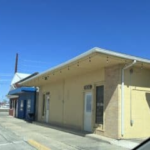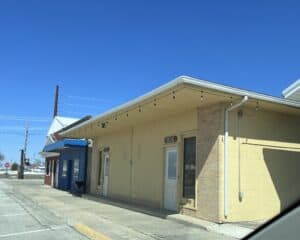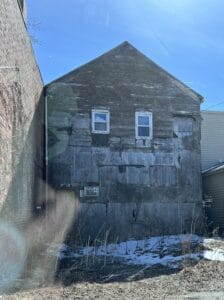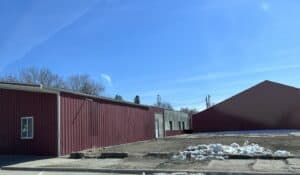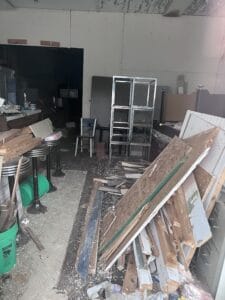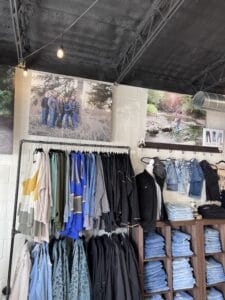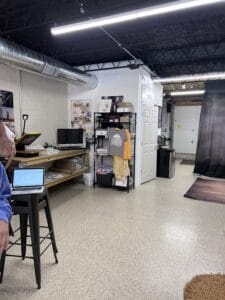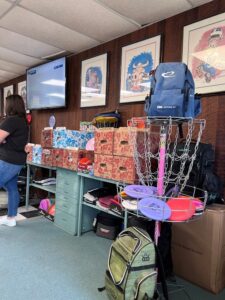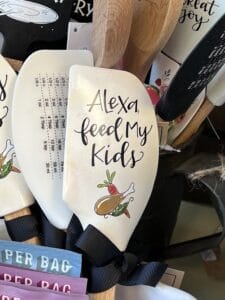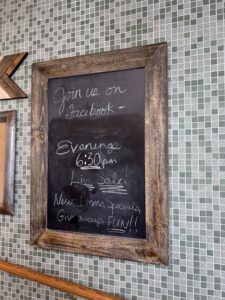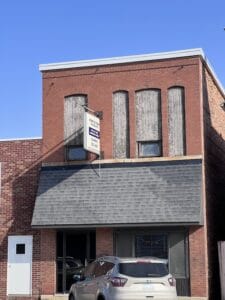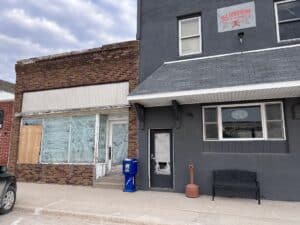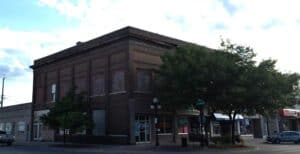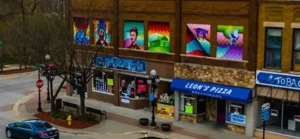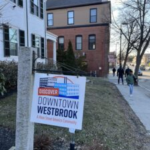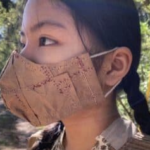Monthly Archives: July 2023
How to fill empty buildings: real world examples Deb Brown shared with Gowrie, Iowa
I attended the Chamber Dinner in Gowrie, Iowa and talked about small town ideas they could use. It was my pleasure to spend a couple of days there. This article talks about small town ideas for the community and by the community. Got empty buildings? Every small town has empty buildings and empty lots. Gowrie […]
I attended the Chamber Dinner in Gowrie, Iowa and talked about small town ideas they could use. It was my pleasure to spend a couple of days there. This article talks about small town ideas for the community and by the community.
Got empty buildings?
Every small town has empty buildings and empty lots. Gowrie is no exception. During my walk around, I took these photos of empty buildings.
My favorite thing to do when you have several empty buildings is to host a Tour of Empty Buildings.
An Empty Buildings Tour is a community event that showcases vacant or underutilized buildings. The goal of the tour is to raise awareness of the issue of vacant buildings and to generate interest in repurposing them. Tours can be organized by local chambers of commerce, economic development agencies, or other community groups. It’s also a great idea for realtors to get together and host a tour!
It can be as simple as adding buildings to a list to be viewed on a given date and time. Create a map and make it available for people to download or pick up. Market it online and offline. I recommend having the owner or realtor on site to answer questions, hand out information and maybe even show them around.
You could have presentations by experts on issues related to vacant buildings, such as real estate development, historic preservation, and economic development. Tours are often followed by networking events or other activities that encourage participants to discuss ways to reuse vacant buildings.
I created and organized the Empty Buildings Tour in Webster City, Iowa. There were 12 buildings on the tour. Ten were filled within 18 months.
SaveYour.Town has created an Empty Buildings Tour Toolkit if you want to host your own tour.
Share Spaces
Coppes Commons, Nappanee, Indiana: An old factory with 100,000 square feet of space had sat empty for years. Made hoover cabinets. There was little chance another big manufacturer would swoop in and fill it all up. So, a local family bought the factory, they’ve opened it up, a little at a time, for smaller uses. There’s retail space, an ice cream shop, all kinds of cool and fun things. They now have 11 businesses, large and small event spaces, and a business center. And they still have a lot more room to grow in the future. Rather than waiting until someone was ready to fill the whole thing, they split it up, and now they have a thriving retail space.
Addison James is a business that sells clothing. They also have a skin care specialist, photographer and graphic designer in their space.
The Drill Barbershop was one of my favorite places to visit. Phil DeCastro is a big fan of disc golf. He’s made it possible for others to participate and provides access to supplies people need. That’s a cool thing about living in a small town, it’s pretty easy to get involved in the things you like to do.
The Picket Fence offered lots of choices in product. They also have a quilter in their space! You can find them often doing Facebook Live at night so you can shop online with them too.
Incubator
When I was the Chamber of Commerce Director in Webster City, I had an idea for an informal incubator project. We had a building owner that had several buildings downtown. I approached them with the incubator project idea. Put your buildings in the program and you offer 3 months free rent and reduced rent the rest of the year. The chamber agreed to help the businesses that went into those buildings with marketing, and the SBDC (Small Business Development Center) came in to help the business with creating a valuable business plan.
Benefits to the owner:
- At the least their utilities were being paid by someone else.
- Every building needs love, and this provided that.
- The business could leave at any time (remember, it’s a way to test out the business idea) or they could stay as long as they wanted!
Did it work? Yes.
Food
The first business was an Italian restaurant. The town loved it! It lasted a year until the husband got a job out of state. No worries though. The Mexican grocery store across the street wanted to open their own restaurant in the back of the store. The owners were saving for a commercial hood. They took advantage of the incubator project and tested their idea out. They tried new recipes and played around with open hours. And got the word out they were going to open a larger spot soon. Which is exactly what they did.
Clothing
Chicago Style rented an incubator spot for a year, then bought a building in the same block and expanded to be 3x times bigger. They’ve also helped three other businesses get started in their new location. Incubators are a great way to test out your idea, build your market, and save money for the next step.
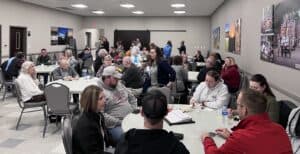
Discussion during my presentation
There are some buildings in Gowrie that would benefit from the shared spaces idea. Take a look at the pictures above from the Empty Buildings Tour Idea. Antiques businesses are often seen sharing space. Another great use is for artists to have studio space and retail space.
The Heartland Community Room at the bank features pictures on their walls of the area, and they are for sale. Shared spaces don’t have to be similar kinds of businesses.
Murals, signs, windows and more

Sign in the local rural telecom building
Signs
In the Webster-Calhoun Cooperative Telephone Association offices they’ve got flipchart size posters that are hand drawn. It’s used to motivate, encourage and to be positive. These are simple and affordable to do. They’re not permanent and can be changed out often. It’s fun too!
Windows
It’s not unusual to see the second story windows boarded over, for a myriad of reasons. I think the owners believe no one is looking at them, and that is not true.
Here’s an idea – paint the boards over the windows. The top part of this building is empty and needs lots and lots of work. The old windows were boarded up and looked awful. The picture below is the building Chicago Style bought.
The community vitality director in Webster City, Iowa found a program involving students at Univ.of Iowa and they created this idea. An artist took large pieces of wood and drew on them, in paint by number style. They were taken out to the fairgrounds and were painted by anyone in town who wanted to help. They feature important people and things in Webster City.
The building on the left is the before, the building on the right is the after.
Murals
The local library in Gowrie has painted a mural on the side of their building. The swimming pool also has a painted mural. Where else could you add art to your community?

Mural on the side of the library
What is that?
There’s a lot right downtown that used to be a car wash. It’s an eyesore, at best. There’s good news for some quick changes you can do! The fence around the lot could be put to good use. Display students’ art, create banners for the area and hang there, have an art contest, and hang the entries there. Loren Ditzler from Warren County, Iowa sent me this picture. Their county courthouse was torn down and left a big empty pit. (They are rebuilding it.) Until it’s finished, they decided to promote their county with banners on their fence.

this used to be a carwash

Warren County banners, photo by Loren Ditzler
Talk to each other.
There are committed people in Gowrie who are excited to make things happen. Lots of people came two nights in a row to hear me talk about their community. It was great to see them talking with each other about their ideas and getting started. Even the County Supervisors came!
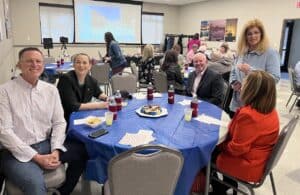
Gowrie Annual Dinner folks
Here’s the thing. You want to keep talking, and gathering, and working on your projects. Don’t fall into the trap of meeting to be meeting and not getting work done. You don’t need committees, or big hairy plans, or permission for most of it. You start with your big idea, gather your crowd, the people who think like you and want to see things happen. Then reach out to others that might be able to help, build your connections. Finally, take small steps. Try things out, see if they work. Let everyone participate in small but meaningful ways.
That’s the Idea Friendly Method:
Gather Your Crowd
Build Connections
Take Small Steps
And share your stories, tell folks what you’re doing. Keep the excitement going!
(if no accreditation on the photo, that means Deb Brown took it)
Support small business to pull your community together (video)
A standing-room-only crowd participated with rural speaker Becky McCray sharing ways to tap the popularity of small businesses to Pull Your Town Together: Overcoming Divisiveness at the Main Street Now National Conference by Main Street America in Boston in 2023. Small businesses are trusted – tap that trust For rural communities with struggling […]
A standing-room-only crowd participated with rural speaker Becky McCray sharing ways to tap the popularity of small businesses to Pull Your Town Together: Overcoming Divisiveness at the Main Street Now National Conference by Main Street America in Boston in 2023.
Small businesses are trusted – tap that trust
For rural communities with struggling businesses, cash mobs and shop local used to be popular economic development tools. They are useful to bring together people from all across the community and bridge divides.
Small businesses are one of the few institutions with broad support across divisions, in fact they are one of the most trusted institutions in the United States. When we give people small but meaningful ways to support local businesses, we’re tapping that shared trust to bridge divides.
To do that, we want to create experiences that bring people together from across different groups to each play a meaningful role.
Cash mobs can pull the community together
Remember cash mobs? A “cash mob” is a group of regular people who decide to all support the same local business at the same time. Picture you and 10 friends all going to the hardware store each with $25 you’re going to spend there. Think how excited you’ll be and how much of a difference you’ll make in the merchant’s sales total.
This has all three elements: Bring people together across groups, give everyone a small but meaningful role, and create experiences that change people’s thinking.
Cash mobs went viral about 10 years ago, and now the buzz has died down. At the Institute for Quality Communities Placemaking Conference, Melody Warnick, author of This is Where You Belong, said cash mobs are still a good way to build place attachment.
Shop Local that still works now
Another project that is not as popular as it used to be is shop local campaigns. To be effective at bringing people together and changing behavior, it has to be more of an experience than just a slogan.
Franklin County, Iowa, started a ‘buy one product local’ campaign that turned into a real experience because they picked toilet paper as the focus. They identified every single business that sold toilet paper, including the Hispanic grocery, the farm supply and the hardware store. Those businesses got really creative with displays and promotions. The local radio station told toilet paper jokes. Facebook was filled with posts of people shopping for toilet paper, pictures included.
Everyone in town was talking about toilet paper! They were redefining themselves as people who supported their town, all because they bought their toilet paper locally.
This has all three elements: Bring people together across groups, give everyone a small but meaningful role, and create experiences that change people’s thinking.
Need a rural speaker for your event?
Rural Speaker Becky McCray presented this session to the Main Street Now Conference, Main Street America, in Boston.
Eye-popping Main Street employment stat
Main Street districts employ almost as many people as Amazon Hannah White, Interim President and CEO of Main Street America, dropped this little statistic at the Main Street Now National Conference in Boston in 2023. Designated Main Street Districts in the US include over 1.1 million jobs, almost as many people as Amazon. Amazon’s approximately […]
Main Street districts employ almost as many people as Amazon
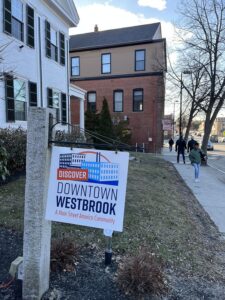
Westbrook, Maine, is a Main Street America community. Photo by Becky McCray
Hannah White, Interim President and CEO of Main Street America, dropped this little statistic at the Main Street Now National Conference in Boston in 2023.
Designated Main Street Districts in the US include over 1.1 million jobs, almost as many people as Amazon.
Amazon’s approximately 1.3 million jobs in the US does not include seasonal holiday help, contract workers, or delivery drivers.
Main Street’s 1.1 million doesn’t include all the downtowns in the US that aren’t designated Main Street Districts and also does not include seasonal holiday help, contract workers, and any other non-employee workers in the districts.
So the comparison is pretty reasonable to me.
Let me know if you use this stat in your community!
Folklife in the South Conference – The Stories Matter
I attended the Folklife in the South Conference in Lake Guntersville, Alabama in June 2023. It was a gathering of community leaders, folklorists, traditional artists, educators, documentarians, and other cultural workers. We came together to hear the stories of work in the field, explore different avenues of folklife in the South and to meet and […]
I attended the Folklife in the South Conference in Lake Guntersville, Alabama in June 2023. It was a gathering of community leaders, folklorists, traditional artists, educators, documentarians, and other cultural workers. We came together to hear the stories of work in the field, explore different avenues of folklife in the South and to meet and mingle with like minded people.
The three days were full of opportunities, presentations, stunning views, and the arts. I took notes at the sessions I attended and will attempt to recap for you now.
Alabama Textile Traditions
This panel of women spoke to Alabama’s long history of women working within both the formal and informal economies to provide for their families through sewing.
Fiber arts have long been a source of creativity, a declaration of self-determination, and a cornerstone of care.
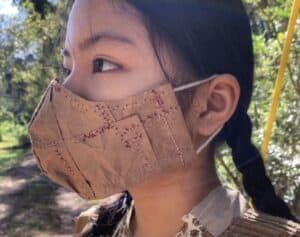
photo from Recycled Runway 2023
Bib and Tucker Sew op https://bibandtuckersewop.org/
This business is unique not only in teaching the fiber arts, but being advocates for the industry and women. Recycled Runway is a program for Birmingham Middle and High School students. Their fashion show was in April, all items made from repurposed materials.
The March Quilts began in 2015 to commemorate the march from Selma to Montgomery marches. They decided to repeat it each year. Members choose a civil or human rights theme and facilitate open sewing sessions and discussion.
Viola Ratcliff, program manager, 205-386-0575 viola@bibandtuckersewop.org
Black Belt Treasures Arts and Culture https://www.blackbelttreasures.com/
This is a nonprofit business in Camden, AL. They began in order to stimulate the economy with heritage arts and culture. They represent over 450 different artists.
One of the things I loved to see was the rehabilitation of an old car dealership where they now hold their classes. It’s a fabulous idea. There are many empty car dealerships in small towns, this is a great way to use the space.
Loretta Bennet https://www.facebook.com/lorettapbennett/
Loretta is an artist who said, “I was quilting before I was born.” She’s one of the quilters of Gee’s Bend. The quilts of Gee’s Bend are internationally renowned hand-made quilts made by a group of women and their ancestors who have lived in the isolated African-American community of Gee’s Bend, Alabama. The residents of Gee’s Bend are direct descendants of enslaved people who worked the cotton plantations of Joseph Gee established in 1816. The quilting tradition in Gee’s Bend goes back beyond the 19th century and some of the quilts have been exhibited at many notable museums.
Loretta shared that she is a participant in Vacation with An Artist Program. (www.vawaa.com) You can spend a week with her and sister and they teach the old methods. She shared they do quite a bit of work using old clothes from deceased people to make quilts in remembrance.
Takeaways from the panel:
- Art, hands on textile art, is important to tourism, there are bus tours from all over the world that come for quilt tours.
- Creation of this art and turning it into economic development benefits from the Idea Friendly Method.
- Storytelling is done in many different methods. Quilting is one of those. There are barn quilts with tours in the Midwest, quilt shops that created an entire town in Missouri and it started from a youtube site that simply gave instruction.
- Creating, quilting, is a good way to bring people together around a common theme. What else can be accomplished at these gatherings?
Small steps for work as a textile artist:
- Find fabric
- Donated clothing and fabric
- Work with the culture arts center
- Sell on Etsy
- Work together
- Packing/shipping together
- Funds from vacation with an artist
Discuss your prices for handmade items:
- Labor
- Time
- Materials
- Love
Remember, it’s art. Price accordingly!
Foodways in Alabama
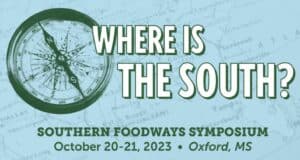 Sponsored by the Southern Foodways Alliance, this panel features Sarah Rodriguez, Southern Foodways Alliance’s lead oral historian, in conversation with three women who teach, preserve, and document diverse and changing foodways in Alabama.
Sponsored by the Southern Foodways Alliance, this panel features Sarah Rodriguez, Southern Foodways Alliance’s lead oral historian, in conversation with three women who teach, preserve, and document diverse and changing foodways in Alabama.
Southern Foodways Alliance
A major theme at this conference was the importance of telling the stories of folklife in the South. Southern Foodways Alliance is capturing the stories. They are exploring the oral traditions and finding ways we are sharing our food stories. Visit their website, Southernfoodways.org and check out the videos.
Jai Williams, Southern Foodways Alliance
Jai specializes in culinary, travel, and cultural photography and was recently named as a Nathalie Dupree Fellow for the Southern Foodways Alliance (SFA.) She’s studying Black land ownership and cultural foodways throughout the South as well as documenting Mississippi’s rich history through visual media.
Again, the theme of telling the stories arises. Another way to do that is through photography.
Contact: Jaithephotog.com @iamjaithephotog
Lauren Murphy, seed saver, Hillfolk Pharmacy
Lauren is a young farmer and a seed saver. She realized while raising her special needs son that there had to be a better way to feed him. Food is medicine after all. She noticed that the seeds she had from the past were not as badly affected by the drought. gut-healing herbalist, soil-steward and traditional foods enthusiast trained in Southern Folk Medicine by Phyllis Light at the Appalachian Center for Natural Health, and in Sociology from Florida State University.
Lauren is a natural teacher and storyteller. You can listen to her on this Native Habitat Podcast session.
Hillfolkfarmacy.com (and Instagram account)
Lauren Richards, Albertville High School Culinary Arts Program
Lauren shared about how her culinary school kids discussed traditions in food, then created fusion meals. They didn’t know that the old rules say you can’t do that. It’s exciting to see what our youth are creating while using the old traditions. Just another way to tell a story!
https://www.facebook.com/ahsculinarydepartment/
Takeaways from the panel:
- Food is medicine.
- Food is another avenue to storytelling.
- ‘If we don’t eat, we don’t meat’ rings true.
- Food allows us to be daring, to try new (and old) things.
- Food is a safe place to gather, and to learn our stories.
A quick thank you and good bye to Bill Mansfield
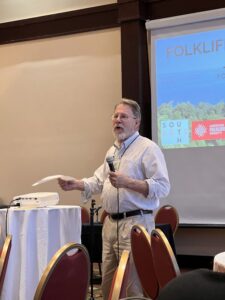 Bill Mansfield, NEA leader National Endowment for the Arts is retiring. He told us he welcomes calls now through end of July for touching base and answering questions.
Bill Mansfield, NEA leader National Endowment for the Arts is retiring. He told us he welcomes calls now through end of July for touching base and answering questions.
They gave out 28.8 million in 1,231 grants last year, many to Native Arts and culture. Bill said no one is perfect but keep trying. “I don’t master the work; I master the tools.”.
One of the stories he shared was how Charleston, WV triangle district was wiped out by highways. It was once the center of black music and culture. In 1974 the area was demolished. Thousands were forced to move, because of underlying racism.
Sadly, this is not a singular story. Black Wall Street in Tulsa was the site of a massacre, white on black, and they rebuilt. Then the highways were placed into that area and Black Wall Street was gone. San Francisco neighborhoods in the 1960’s were seized with imminent domain and razed, affecting at least 20,000 people. This federally funded urban renewal movement was not just in big cities either. Greenville, NC, Tupelo, MS, Demopolis, AL were all affected. Read more in this article in the Boston Review.
Bill, may you enjoy retirement and keep on being creative!
Folklife and the Future
Alabama artists and activists Sehoy Thrower, Mary Godfrey, and Susan Walker engaged in conversation around how their present work is shaped by a dynamic vision of their community’s future.
Sehoy Thrower, Poarch Band of Creek Indians
Sehoy spoke of how the Creek were moved out of their homelands. “Our diaspora got changed, against our will.”
They used the native plants and are trying to bring them back. It’s hard to be optimistic when you look at their land. Biodiversity is plummeting. Rivercane is gone, invasive species bamboo overtook it
Folklife traditions are the thread that never ended
Creek are a people of fire, inner and outer. Creeks have one foot in the past and one in the future.
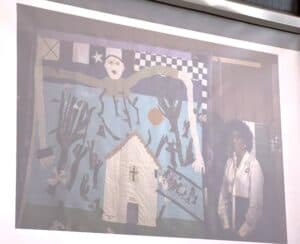
Quilt (apologies for bad picture)
Mary Godfrey, Lowndes County Community Life Center
Lowndes County worked on the quilt project. They asked, ‘who are your people?’
Mary shared that in the quilting environment “only love [is] there.” Winnie McQueen said in a video “your name will never be forgotten.”
It’s not meant to harm; it is meant to heal, the telling of the stories. Quilters often sing when they sew.
“Happiness is very fleeting – joy lasts.”
Susan Walker, Sew Their Names Project
She restored a church from 1843, that her grandfather owned – along with the slaves. The Sew Their Names Project added the names of the slaves to the quilt they did. It was hard to find the names of slaves, sometimes just used numbers
Susan said, “Can’t have reconciliation without the truth.”
When you view the quilt, look at the left side– it’s happy white people. Then look at the right side – all slavery images.
A traveling exhibit of this quilt is coming and with songs. Then will be permanently displayed in Lowndes County.
Takeaways from this panel:
- Will we ever learn? The treatment of the natives and the slaves was horrendous. What can we do going forward to rectify this?
- You can’t have reconciliation without the truth. It begins with telling and hearing the stories.
- We must take care of our Earth. We simply must, before we can’t.
Panayotis League, fiddler
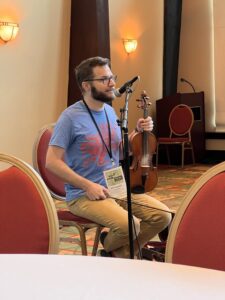
Panayotis League, fiddler
Panayotis is from Tarpon Springs in Florida, and a Greek. He told of the Greek sponge divers and merchants from the Aegean islands who came to Tarpon Springs FL in 1906.
He shared songs on his fiddle. The melodies are associated with place, Kalimos and Kos. In Mobile AL were the Greeks from Crete. In New Orleans the Greek community were in the New World around 1760
“When my old people started dying was when I woke up to how amazing this music was” Panayotis said.
Takeaway from Panayotis:
- After he was done with his session, he went with a young man to a lobby area. He proceeded to teach him how to play his fiddle in the way of the location. In other words, he took a bluegrass song and played it like a Greek song. He was patient, kind, happy to be teaching.
- He’s not just a fabulous musician, but a storyteller, a teacher and makes one love music even more.
- The stories matter.
Real Meaning of Dia de Muretos
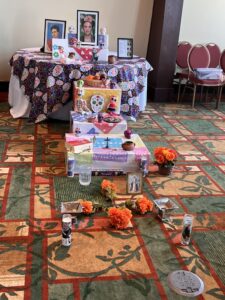
Day of the Dead altar
Mónica S. Sánchez, from the Cazateatro Bilingual Theatre Group led this workshop. The Day of the Dead is a celebration of life.
“Music and food make everything better.”
Monica had set up an elaborate altar. The Altar is set up in 7 levels, and she shared what goes on each level.
Takeaway from Monica:
- Her excitement as a theater person was engaging. Where else can we be that excited in our lives?
- It’s important to honor the dead, in the way each of us does in our traditions.
- It’s all about remembering the people and the stories.
Appleshop Short Film Stories
Ethan Payne frightenedmedia.com
He directed the Appleshop films we previewed. I was busy watching the films, and feeling just like I was back in Jackson County, KY. Here’s the description from the agenda:
Appalshop recently completed four short films documenting regional Appalachian traditional artists. This series captures, archives, and amplifies the stories behind the craft. Our focus was in the following mediums: traditional music, storytelling, crafts, woodworking, and foodways. Appalshop’s documentary work has from the beginning told authentic stories of Appalachia, working from within the community to banish stereotypes and misrepresentations. The short films in this series are:
Bright Morning Stars: The Johnsons of Hemphill
That Tree Lives On: A Film About Terry Ratliff
Lady D
Full of Wonder: The Art of Angie DeBord
Takeaway from the films:
- It’s never too late to make a difference.
- You are never too young to belong and do things.
- The stories matter.
Music
I recorded a little bit from the performers I saw.
Greek Fiddle
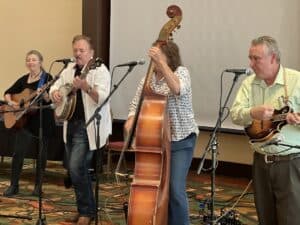
Gary Waldrep Band
Bluegrass
The Gary Waldrep Band performed an hour of traditional bluegrass music. Gary Waldrep, the founder, is from Kilpatrick, Alabama. He has participated in the Alabama State Council on the Arts apprenticeship program and touring arts program.
The Blues
For years, blues artists have not only performed the traditional art of African American Roots music but also utilized the methods of folklorists to preserve and share the Blues People’s narrative. This panel features Alabama’s traditional Blues artists who have participated in apprenticeships, created nonprofit organizations, and more to ensure preservation.
-
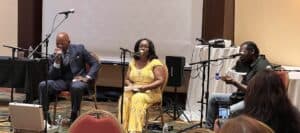
Blues Performance
Jock Webb
- DieDra Hurdle-Ruff
- Keithen Ruff
Follow FITS partners on social media and visit the websites for updates:
- South Arts
- com/southarts
- Instagram: @southartstradarts and @southartsorg
- Twitter: @southarts
- Alabama Folklife Association
- com/AlabamaFolklife
- Instagram: @alabamafolklife
- Twitter: @AlabamaFolklife
- Alabama State Council on the Arts
- com/AlabamaStateCouncilontheArts
- Instagram: @alabama_arts
- Twitter: @Alabama_Arts
- American Folklore Society
- com/AmericanFolkloreSociety
- Instagram: @americanfolkloresociety
- Twitter: @afsfolklorists
Join the next gathering 2023 American Folklore Society Annual Meeting, November 1-4, in Portland, Oregon.
If there is no accreditation on the photo, it means Deb Brown took it.
Global Entrepreneurship Week – Share your story of starting small
This fall, we will be participating in Global Entrepreneurship Week. Here’s your preview of what to expect from Nov 13-19, 2023. The challenge of rural entrepreneurship Rural entrepreneurs and small town businesses face extra challenges including online competition, limited workforce and even finding a usable building. Today, creative entrepreneurs are using new innovative business […]
This fall, we will be participating in Global Entrepreneurship Week. Here’s your preview of what to expect from Nov 13-19, 2023.
The challenge of rural entrepreneurship
Rural entrepreneurs and small town businesses face extra challenges including online competition, limited workforce and even finding a usable building. Today, creative entrepreneurs are using new innovative business models to overcome these challenges and start businesses that reshape their communities for the better.
What you’ll learn – Start Smaller in Your Small Town
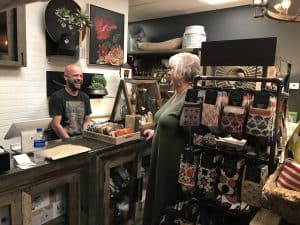
Photo by Becky McCray
At SmallBizSurvival.com from Nov 13-19, 2023, you’ll discover articles, short videos, audios and more free resources focused on how smaller small businesses can succeed. Learn the Innovative Rural Business Models and uncover hidden opportunities, like business inside a business and more.
Contributors Becky McCray and Deb Brown will share their own entrepreneurial experiences, stories from international rural entrepreneurs and their materials from SaveYour.Town and Building Possibility.
Find this and other Global Entrepreneurship Week events listed on the official calendar at GenGlobal.
Once we get going, you can see all our stories tagged with Global Entrepreneurship Week here.
Share your own story
You can add your own story, too. What have you learned about rural small business? What’s working in your own business and your own community? What have you learned to avoid?
Leave a comment or use our contact form to share, and I’ll reach out to follow up.
This is global. Stories from anywhere rural are welcome.
